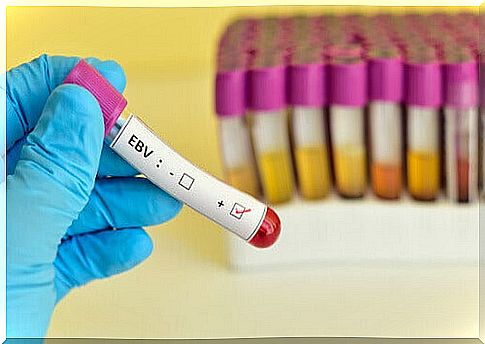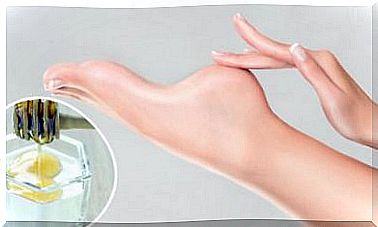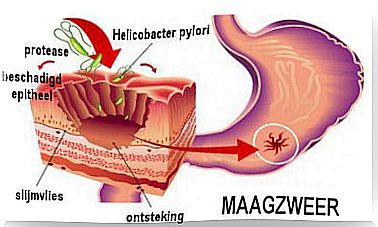Things You Didn’t Know About Mononucleosis

Mononucleosis is a disease caused by the Epstein-Barr virus (EBV) or the human herpes virus 4 (HHV 4). This is a disease that only occurs in humans. Normally, the condition affects children, teenagers, and young adults.
The Epstein-Barr virus has the ability to remain latent (at rest) and to deactivate itself when weakened by the immune system.
In this article, we will talk about both the virus and mononucleosis.
How do you get infected with mononucleosis?
The infection is transmitted directly through contact with saliva from infected people. That is why the disease is often called the ‘kiss disease’.
You can also contract the virus through contact with objects such as cups or toothbrushes used by infected people. It is also possible to pass it on through blood (transfusions) or through a transplant.
Usually, the age at which you can get this disease depends on your socioeconomic level. This is a childhood disease in developing countries. However, in more developed countries, this is a common disease in teens.
Epstein Barr Virus Infection

The Epstein-Barr virus infection in people with intact immune systems is normally asymptomatic. As a result, the disease goes undetected.
However, there are differences according to age:
- During childhood, the infection is asymptomatic in most cases.
- There are two options for teens and young adults. The disease is asymptomatic or you show symptoms of mononucleosis.
- In adults over 40 years of age, most primary infections of EBV lead to viral hepatitis.
However, the situation is more serious in people with a suppressed immune system (such as, for example, people with AIDS). In these cases, infection with this virus can cause lymphatic tissue disease. This can seriously endanger their lives.
Symptoms of mononucleosis

Mononucleosis has an incubation period of 4 to 6 weeks. During these weeks, the individual usually exhibits flu-like symptoms (fatigue, general malaise, low-grade fever or fever less than 38º Celsius).
After this period, the symptoms of mononucleosis appear:
- High fever (above 38º Celsius).
- The lymph nodes in your neck are usually very swollen. This is one of the most characteristic symptoms of this disease.
- In some cases, the spleen swells.
- The infection can also cause intense fatigue.
The diagnosis of mononucleosis
The fastest test for confirming the diagnosis of mononucleosis is a monospot. This is a technique that allows doctors to detect the presence of heterophile antibodies in these patients. Overall, this test would be positive in 85% of mononucleosis cases.

Complications of mononucleosis
This disease can cause a rupture of the spleen. However, this only happens in 1% of cases.
Patients with mononucleosis may also exhibit jaundice (a yellowing of the skin and mucous membranes).
Other diseases associated with the Epstein-Barr virus

In addition, there are other diseases that doctors may associate with EBV:
- Nose and Throat Cancer
- Systemic Lupus and Other Autoimmune Diseases









